F.P. Journe Chronomètre Optimum: Hands-on and explanations (with LIVE photos)
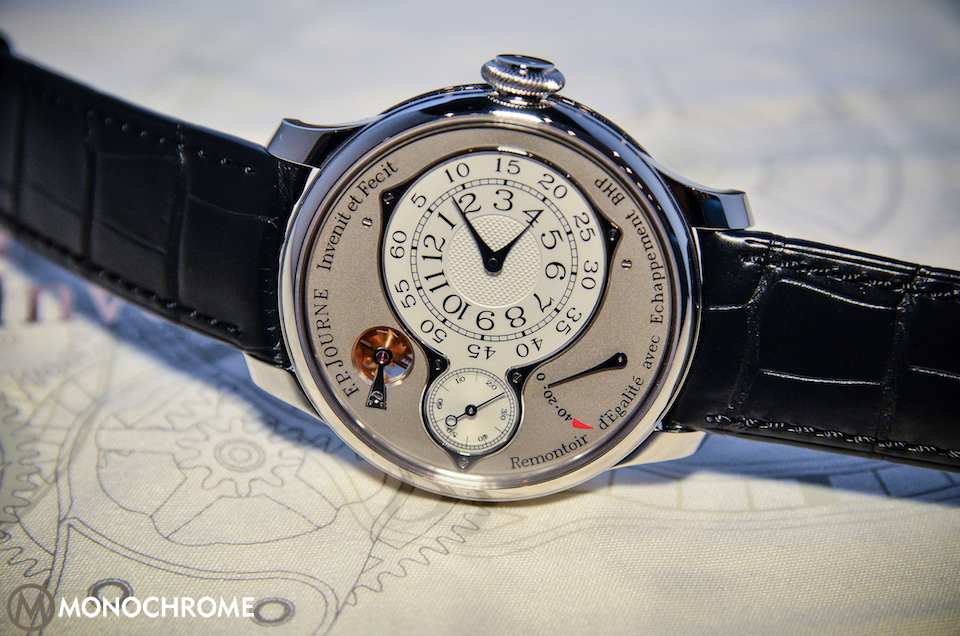
F.P. Journe… A name that sounds good to our ears. Some might say he’s a genius, some are in love with his watches, and some just don’t get what is hidden behind those pink gold movements. What is sure is that this man creates feelings, good or not. Back in 2012, he presented the Chronomètre Optimum as the quintessential of his researches on chronometric performance. We did have the opportunity to spend a few hours with this – apparently – very simple timepiece. And guess what? This is far away from being simple. Explanations and feelings on François-Paul Journe most precise watch.
F.P. Journe is a brand that we didn’t cover so much for the last months. But that’s going to change as we get our hands on one of the last creation of Mister Journe (except the Historical Anniversary Tourbillon which was a 2013 limited edition). One of the main research areas of F.P. Journe had always been the chronometric precision. Of course, you can find some fancy complications in the whole range, such as tourbillons, minute repeaters (by the way, we also had some wrist-time with the minute repeater…) or chronographs. But they all share the same goal of precision. The Chronomètre Optimum goes even further in the quest of accuracy.
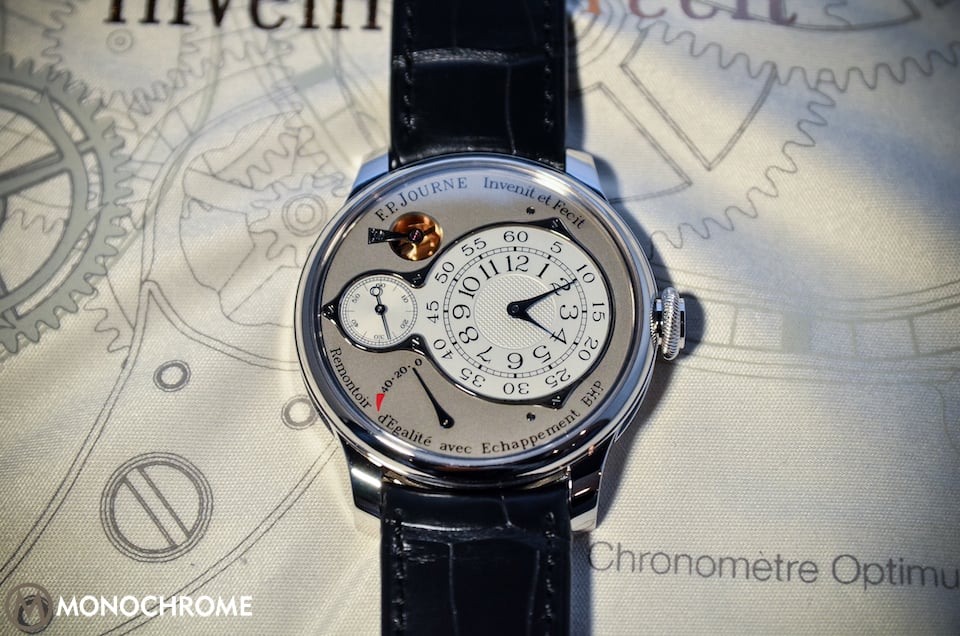
The idea of this watch can be found back at the end of the 80’s. But as he couldn’t technically create it, François-Paul Journe waited until 2001 to re-work on the project of a watch featuring a double barrel, the ‘remontoire d’égalité’ and a special escapement – a visually simple three hands watch but with a technically complicated movement, that came to life in 2012.
How does the Chronomètre Optimum work?
The goal of F.P. Journe with this timepiece is to achieve a high chronometric precision, not only at a special instant, but also during the whole range of the power reserve and within the years – meaning that the watch should keep the same accuracy during the 70 hours of the power reserve and also for several years. We all know that both are complicated to achieve for several reasons:
- During the X hours of the power reserve, the main spring tends to loose its stability and it doesn’t deliver the same amount of power once entirely wounded or partially wounded.
- The stability of the precision is also affected by the deterioration of lubricants. Within the years, they loose some of their performance and tend to dry.
In order to beat those issues, the movement of the Chronomètre Optimum is based on 3 innovations:
- A parallel double barrel for a more stable delivery of energy during the whole range of the power reserve. It also reduces the frictions on the main gear.
- The ‘Remontoire d’égalité’ (that can be seen at 11h on the dial) that allows the energy to be delivered with a constant force to the escapement. It releases an identical portion of the available energy in one-second intervals and thus giving stable amplitude to the balance. The work of the ‘remontoire’ can be observed both on the dial and on the back of the watch, as it’s linked to a deadbeat seconds mechanism.
- In order to face the deterioration of the lubricants, F.P. Journe did not used a silicium escapement (as Breguet or Omega did) to eliminate any lubricants. Instead, he uses a twin-wheel escapement, made with traditional materials, using a very smooth design to reduce considerably the frictions.
We didn’t have the chance to wear the watch enough to know if that technicality is useful or if it really works. However, the specifications are pretty impressive and once you turn back the watch, you can feel the complexity of the movement. As the bridges did not hide the view on the components, you can observe the work of the engine from the double barrel to the balance wheel – it’s always a pleasure for the initiates to ‘feel’ the mechanism.
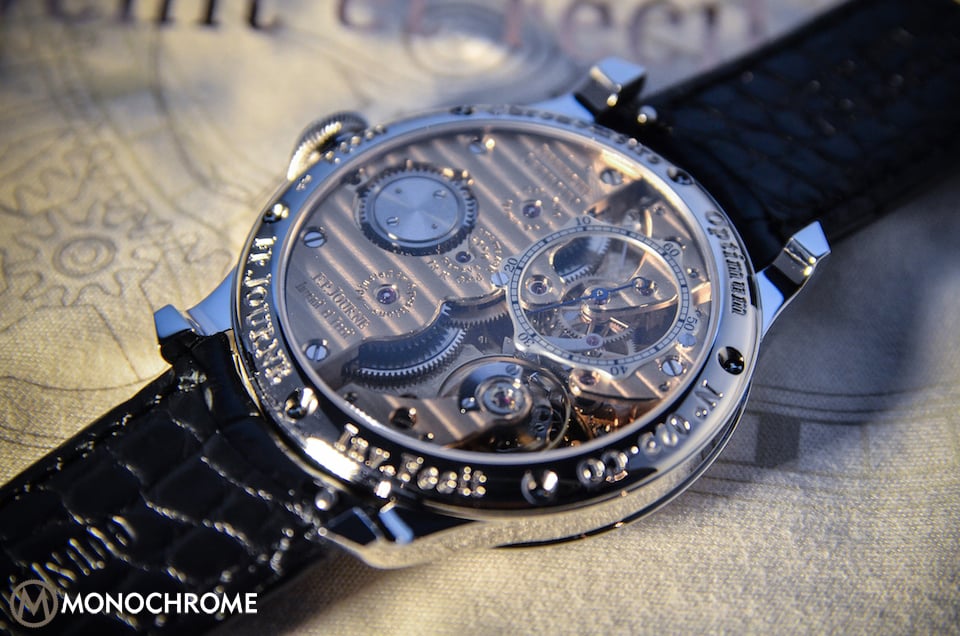
Looking at the back side of the watch, there’s a surprising feature: a sub-dial. It’s a deadbeat seconds mechanism (or seconde morte), meaning that the seconds hand sits still for a seconds and then jumps instantaneously to the next seconds mark, exactly like a quartz watch. But here, it turns in an anti-clockwise way, as it’s linked to the ‘remontoire’ on the front dial.
Talking aesthetics, the pink gold movement (as always with F.P. Journe) is very well designed and finished, in the Haute Horlogerie tradition – polished bevelled angles, ‘Côtes de Genève’, hand finishing of the components… and furthermore, the whole layout is very pleasant to look at.
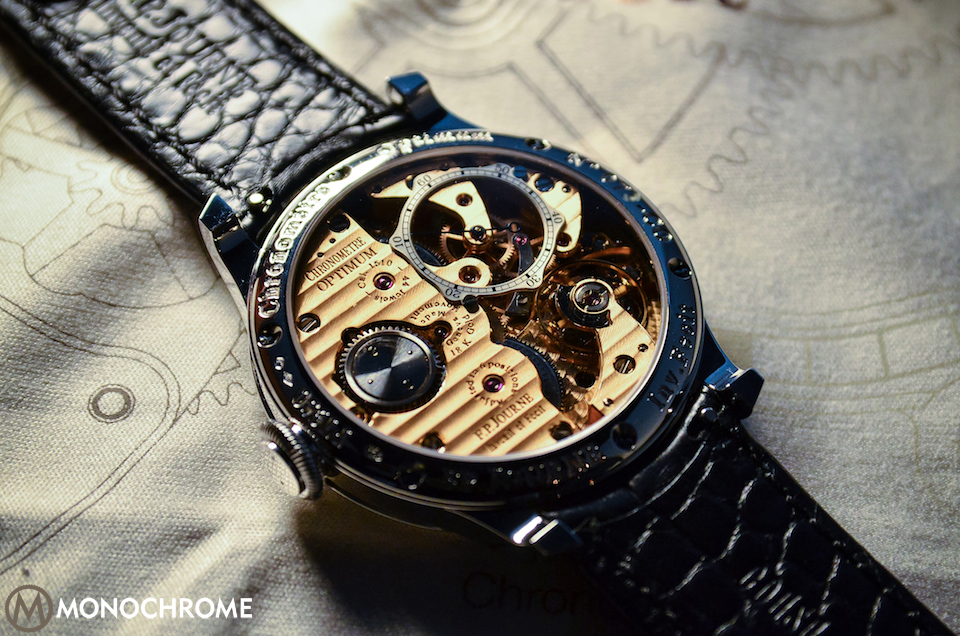
No big surprises on the front side of the Chronomètre Optimum, as we can find the classical look of the F.P. Journe timepieces. The platinum case measures 40mm (note that the watch is also available in 42mm. The only thing that changes is the size of the bezel and of the lugs, both thicker. The dial remains the same diameter) and 10mm height.
The dial remains also in the vein of the brand’s design with rimmed sub-dials for the hours and the small second (both in guilloche silver) and a power reserve indicator located at 7 o’clock. The base dial is made of grained gold, giving a frosted effect that contrasts with the polished rims of the sub-dials. The whole design is far from being classical in the details – blued ‘duck nose’ hands, double hours and minutes rim with these specific numbers that turn around the dial and a quite unusual layout – however the entire dial remains very discrete.
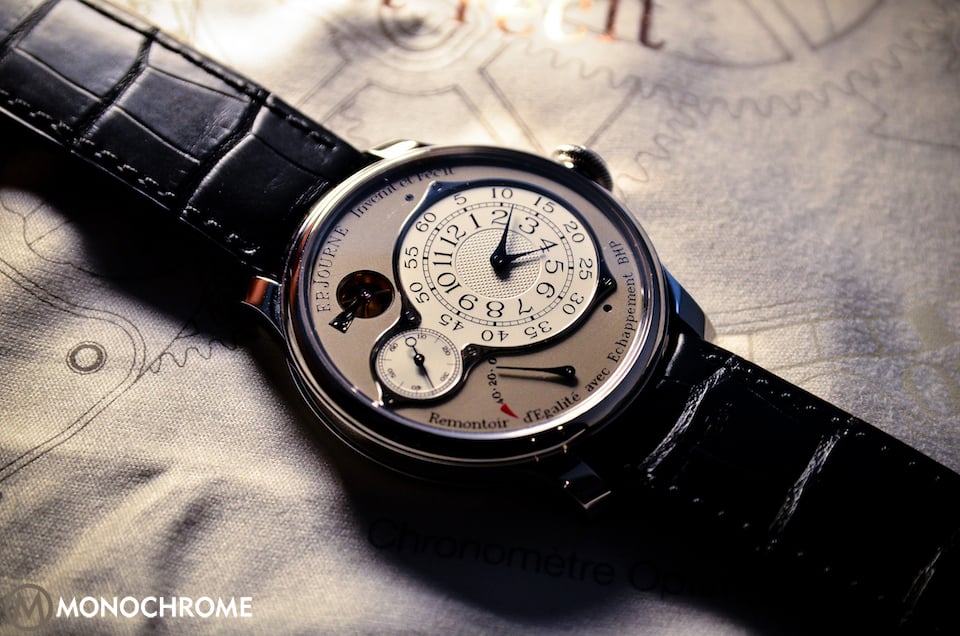
On the wrist, the Chronomètre Optimum is neither a small, thin or light watch. The clear colour scheme, linked to a very thin bezel gives a large dial aperture and virtually enlarged the watch – Personal opinion… As I’ve tried both the 40mm and the 42mm, the first one sits better on the wrist, not for comfort reasons, but it’s more elegant as the lugs and bezel are thinner. End of personal view… – and at 10mm height, we cannot call it extra-thin. But regarding at its complexity, it’s still reasonable. As the watch is made of platinum and the movement in gold, the weigh is also quite important for a dress watch. Some might love it because it allows feeling the preciosity of the watch, some will find it too heavy. But once you wear it, it’s just well balanced and the proportions are perfect.
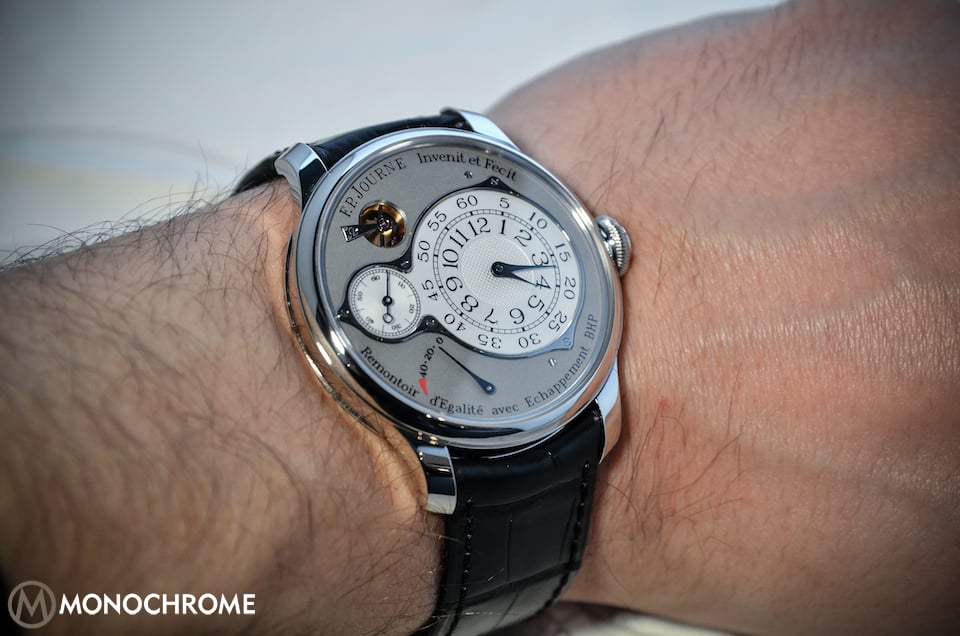
As simple as the dial could be, it is very lively, as you can see the remontoire working. The big question is: can we wear it on the other side just to see the movement all the time? The strength of the Chronometer Optimum is clearly to offer a very simple watch in appearance BUT with a high degree of complication. Nothing is showy and it remains really wearable on a daily basis. It’s a very egoistic pleasure that only the owner or a few watch enthusiasts will understand. And that’s what makes, in my humble opinion, the biggest achievement of this timepiece.
Some specifications:
- Movement: calibre 1510, manual winding, all bridges and plates in pink gold. 34,4mm diameter, 3,75mm height. 21.600vph. 70 hours of power reserve. 2 mainspring barrels in parallel. 2 High performance Bi-axial escapement with arbour and wheels in Titanium, functioning without oil.
- Indications: 1-second remontoire at 11h, very light in titanium and balanced. Natural dead beat second on the back of the movement. Off-centre hours and minutes, small second at 9h, power reserve at 7h
- Case: platinum or 18K red gold, diameter 40mm or 42mm, total height 10.10mm, dial in gold and silver guilloche ‘clous de Paris’
- Price of the 40mm platinum: €83.500
More info: www.fpjourne.com

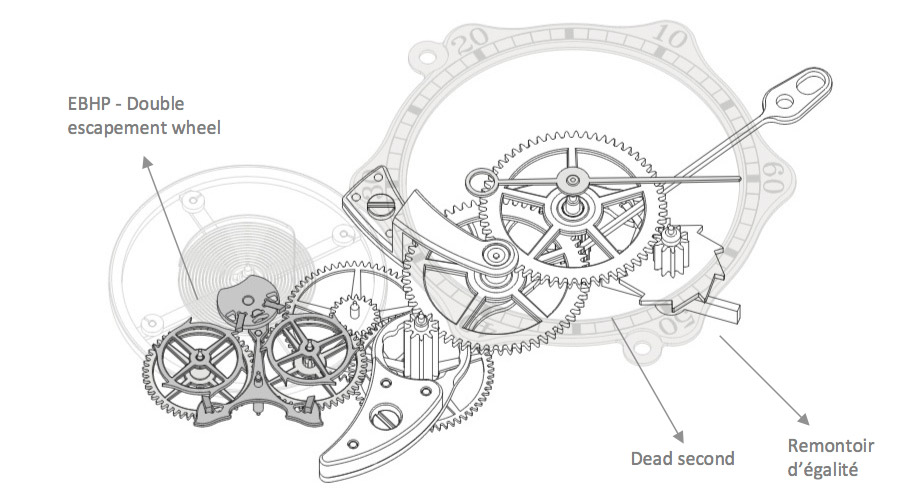
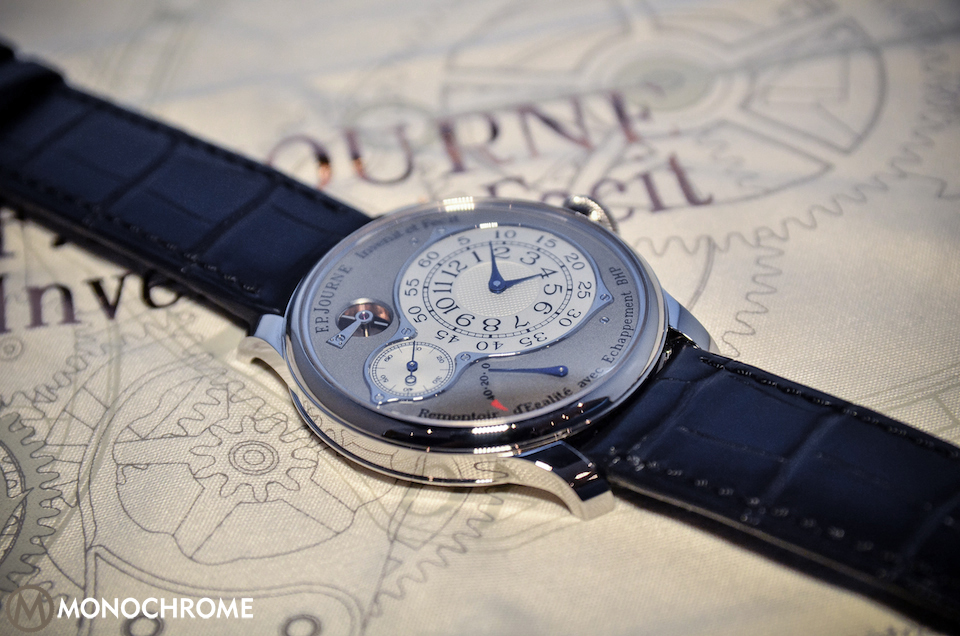
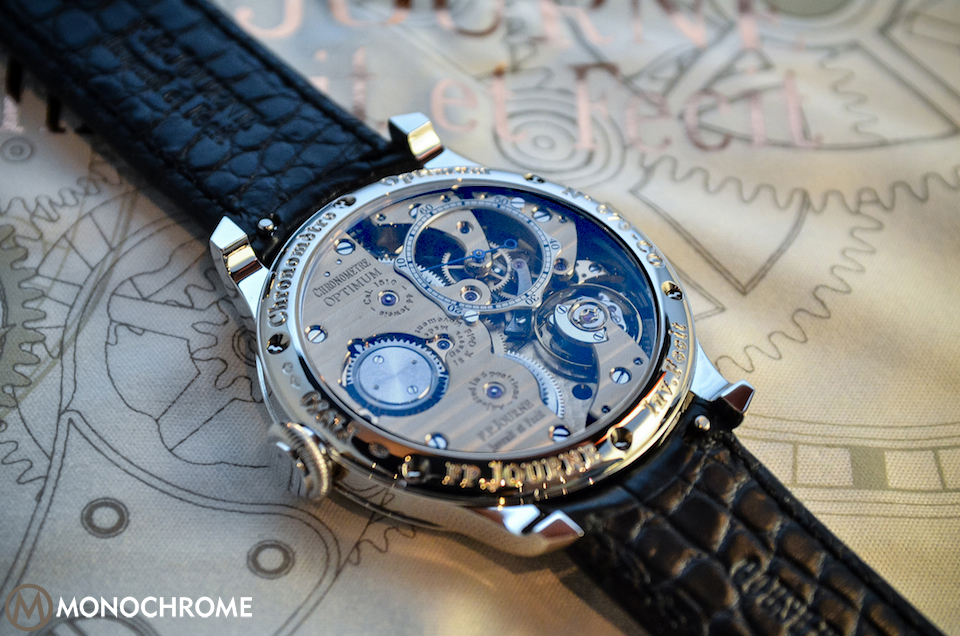




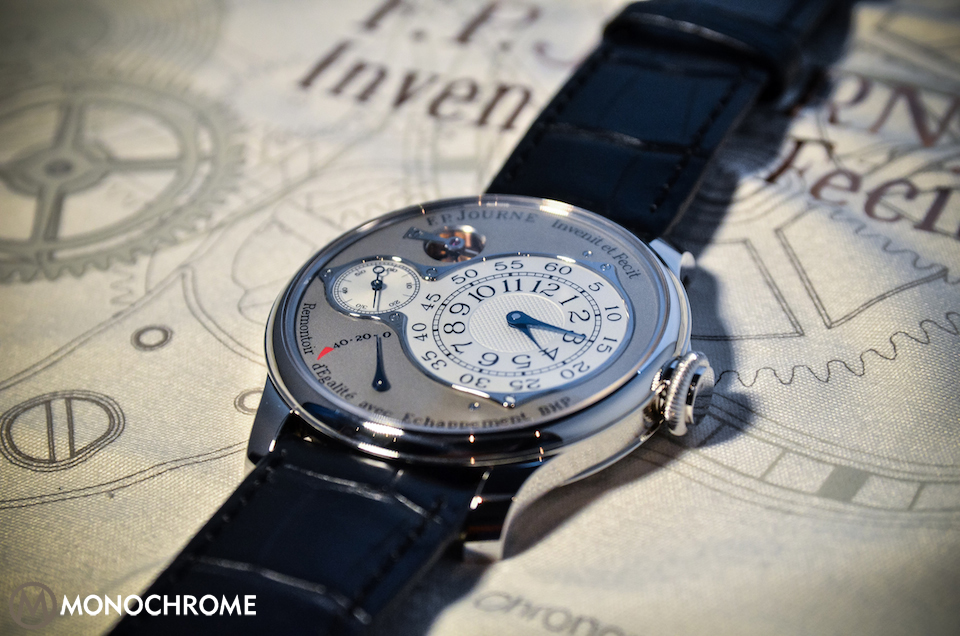





2 responses
Very nice article, merci Brice!
@Xavier. Thank you! happy that you liked the article! Merci !